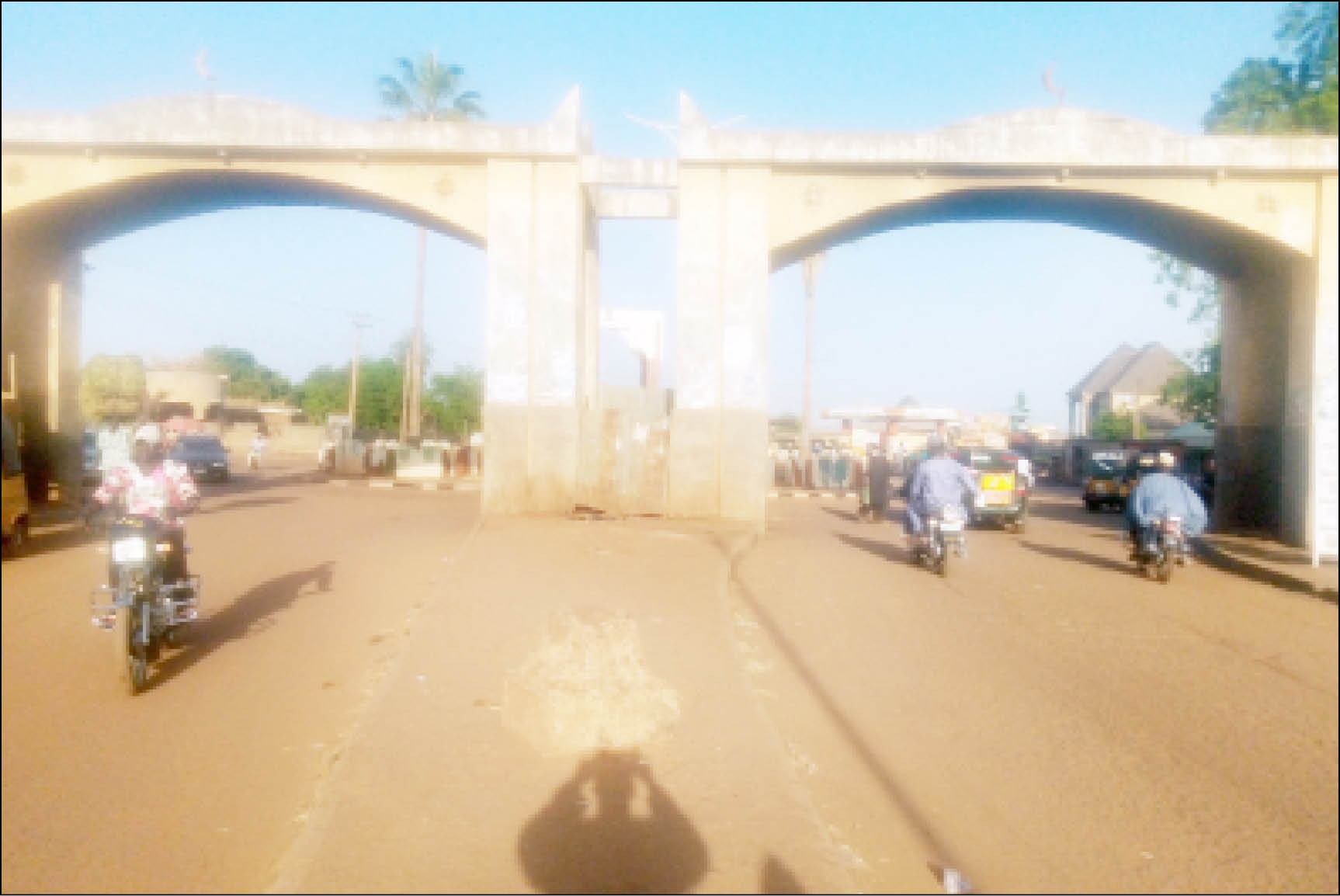As a common practice in the Hausa nation and because of the security situation at that time, which led to attacks and counterattacks among various communities, the first Sultan of Sokoto, Muhammad Bello bin Usman bin Fodiyo, in 1809, as a defensive mechanism, ordered the construction of walls and gates to fortify the city.
Daily Trust learnt that the construction was completed in 1818.
- Quit notice: Youths attack Fulani communities in Oyo
- COVID-19: One year after Wuhan lockdown, Nigeria, others still suffering
It was divided into two phases: Kofar Taramniya, Rini, Marke and Kware were completed in 1814 while the second four gates were said to be constructed after his father, Sheikh Usman bin Fodiyo, relocated to Sokoto from Sifawa.
When Shehu arrived in Sokoto in 1815, he settled outside the city to the west; and because of that, Sultan Bello ordered that the city be expanded to encompass his settlement, which meant that the walls would be expanded as well.

“It led to the construction of four more gates, Kofar Dundaye, Kade, Aliyu Jodi and Atiku, between 1815 and 1818,’’ according to Abdullahi Bukhari Sokoto in his book, ‘Intellectual Foundation of Sokoto.’
It was said that during the reign of Muhammad Bello, the doors of the gates were made from woods and held together by nails, while the later part of Sultan Atiku’s reign saw the existence of metal made by blacksmiths.
According to the late Waziri Junaidu in his book titled, “Tuh Fatu Saniyya Bi Tarikh Sokoto Bahiya,’’ two of the gates, Kofar Kware and Kofar Dundaye were named after the villages they led to.
He added that two others were named after the war commander under Sheikh bin Fodiyo, Aliyu Jodi and one of the sons of the reformer, Atiku.
He also stated that the remaining four were named after some important economic trees, including Kofar Taramniya (gum tree), Rini (white silk cotton tree), Marke (chewing stick tree) and Kade (shea butter tree).
The eight gates were under the administrative leadership of the Sarkin Kofa, who was answerable to the Sultan and had porters and scouts under him.
The title was said to be hereditary, but according to the director of culture of the Waziri Junaidu History Bureau, Bello Hamisu, it is no longer there.
“There is no more Sarkin Kofar because the gates are no longer closed; they don’t even have doors,’’ he said.

He explained that some historians believed that the gates were there long before the reign Sultan Muhammadu Bello, but the most generally accepted belief is that they were constructed during his time.
The gates were constructed to fortify the city because there was a serious rivalry between jihadists and the Gobir Kingdom.
“It was part of security measures to enable the jihadists know who was coming into the city.
“There was a specific time to close the gates, after which nobody was allowed to go in or leave the city,’’ he added.
A renowned historian of the Sokoto Caliphate, Malam Sambo Wali Junaidu, told our correspondent that each of the eight gates was constructed for a reason.
He said the city was divided into old and new Sokoto.
He explained that the old Sokoto was under the old Gobir Kingdom and had eight gates, which included Kofar Taramniya, located at the southern part of the city.
He added that there was a gate located at the northern part of the city, called Kofar Kware, so named because there was a village called Kware; and its people, who paid allegiance to Sultan Bello, came to Sokoto for Juma’at prayers through the gate.
Kofar Rini, which was at the eastern part of the city, was used by Sultan Bello and his people when they were going to the Eid ground.
There was another gate in the eastern part of the city, called Marke, which was usually used by Bello in his way to Wurno, which was one of the three administrative centres for the Sultan.
He noted that the caliphate under the reign of Sultan Bello had three administrative centres, Sokoto, Wurno and Kauran Namoda, which is now in Zamfara State.
Kofar Marke is significant because it was the last gate Sultan Bello passed through and never came back from the journey; he died in Wurno and was buried there.
Junaidu, the historian, who is 83 years old, told Daily Trust that Kofar Dundaye, in the northern part of the city, was named after a village called Dundaye, which is located around that area.
He explained further that the new Sokoto was hitherto under Kebbi.
When Shehu was in Sifawa and resolved to relocate to Sokoto with his people, he settled at a place in the southern part of the city, which was named Sabon Birni.
Because of that, Sultan Bello bought the farmlands in the area and expanded Sokoto.
“After the expansion, another gate was constructed, which was named Kofar Aliyu Jodi. As a war commander, Jodi was always with Shehu.
Other gates were constructed – Kofar Atiku and Kofar Kade. Atiku was the son of Shehu while Kade was a tree in the area,’’ he said.
He said there were people who manned the gates and they were all under Garo. Garo was a title given to someone in charge of the city gates.
Junaidu, however, regretted that the title does not exist any longer, for unknown reasons.
He said some Sufi followers believed the gates were eight to correspond with the number of gates to paradise, but there is no historical evidence to back that claim.
On whether there was any wall surrounding the old Sokoto city, he answered in affirmative, but added that it had collapsed and could not be traced.
Daily Trust also learnt that the gates helped a lot in checkmating criminals as potters and scouts were always on the lookout for runaway slaves, stolen animals and kidnapped children.
Suspicious movements were promptly reported to Sarkin Dogarai, who would arrest the suspects and interrogate them before taking them to the Sultan for further action.

It was said that people who were conferred with the titles of Ardon Shuni, the district heads of Dange and Tureta usually passed through Kofar Taramniya to pay visits or homage to the Sultan; hence Waziri Junaidu once described the gate as “ark or ship of Prophet Nuh,’’ which he said was used to save the people of Sokoto.
Some historians believe that when Sokoto fell to the British army, they marched into the city through Kofar Rini because there were no jihadists to push them back.
The gates were rebuilt in 1992 during the time of Sultan Ibrahim Dasuki.
Malam Bello Tukur, a resident of Kofar Kware, told our correspondent that the Fulani from different parts of the country visit the gate every year as part of rituals for their pilgrimage to Hubbaren Shehu.
“They usually come with containers and fetch water from the stream behind the gate. Some of them even take grasses in the area for spiritual purposes,’’ he said.
According to Tukur, residents of the community guard the gate against vandals because it is part of their heritage. He added that it was rebuilt during the reign of Sultan Ibrahim Dasuki.
Another resident of Sokoto, Malam Abdulmumini, told Daily Trust that Kofar Taramniya was the most watched and guarded in the past because it was the last gate to the Sultan’s palace. It was just few meters to the palace.
Although it has been converted to a roundabout, there is still a symbolic gate to indicate its significance.
According to Abdulmumini, Kofar Taramniya was the main gate to the city, and there used to be a Sarking Kofa, who looked after it and ensured that people paid their taxes before they were allowed to pass.

 Join Daily Trust WhatsApp Community For Quick Access To News and Happenings Around You.
Join Daily Trust WhatsApp Community For Quick Access To News and Happenings Around You.


